Threading Colour into Life
From midwife to spinning yarn in her Little Mill Over the Hill, Dinie Brady lets us in to her colourful life.
From midwife to spinning yarn in her Little Mill Over the Hill, Dinie Brady lets us in to her colourful life.
Everything about Dinie Brady is refreshing.
Her infectious energy, her passion and can-do attitude, and her love of making things from scratch — like soap, sourdough and knitting.
Working with her hands is a “really important part of me,” she says, admitting she’s not the type able to sit around.
Dinie owns The Little Mill Over The Hill, a mini commercial spinning mill on her picturesque one-acre Hamurana property near Lake Rotorua. But she wishes she started 10 years earlier.
“I’m almost 64. If I do this for another 10 years, I’ll be almost 74, and how much more am I going to want to do?
“But, even if I end up doing this one or two days a week, if I can create something that brings me or anyone else joy, I’m happy.”
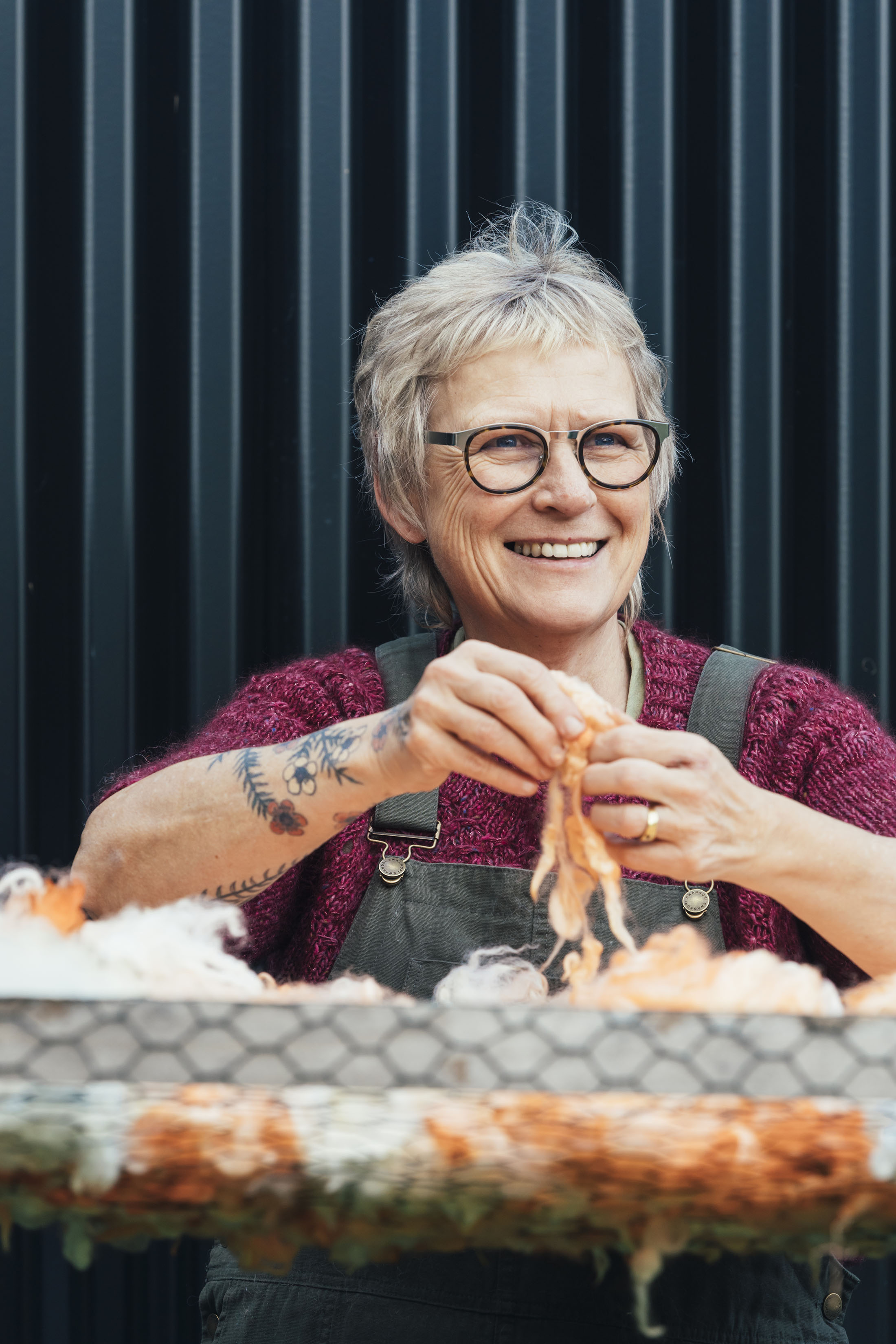
Dinie’s life has been as colourful as the striking yarn she produces, and three years ago, she was a midwife of over 20 years looking for her next adventure.
Dinie had always wanted to be a midwife and jumped at the opportunity to study it while working as a legal secretary in Christchurch.
She moved to Rotorua and devoted her life to walking alongside women as they stepped into motherhood and brought their babies into the world, all while raising her five children with her husband.
“I loved it, it was very rewarding.”
But it came at a cost.
“Being on call for long periods of time (usually 24 hours a day for several days in a row) impacts your family life, with family events and needs frequently having to be compromised.”
Seventy-hour weeks not unheard of, she says. “It was the nature of the job.”
Yearning for balance, and seeing midwife and doctor friends pass away from cancer or heart attacks, she decided the end of that chapter was nearing.
“It made me think, I would like to retire as others didn’t get that opportunity.”
She decided that when she stopped for good, she needed something else to keep her busy.
Around this time, she started following a former burnt-out photographer in Sweden who bought a 150-year-old mill.
“I was like, ‘Oh my God, I’d love to do that’.’”
Her only experience in this realm at the time was knitting for her grandkids or hand-spinning yarn after getting home at 2am after a birth to try to unwind.
And as though the universe was listening, a mill in Ōtorohanga popped up on Facebook Marketplace days later and she drove down with her husband to have a look.
“I knew when I walked in I was going to buy this,” she says, unsure if she could do it.
“If I want to give something a go, I tend to find ways…
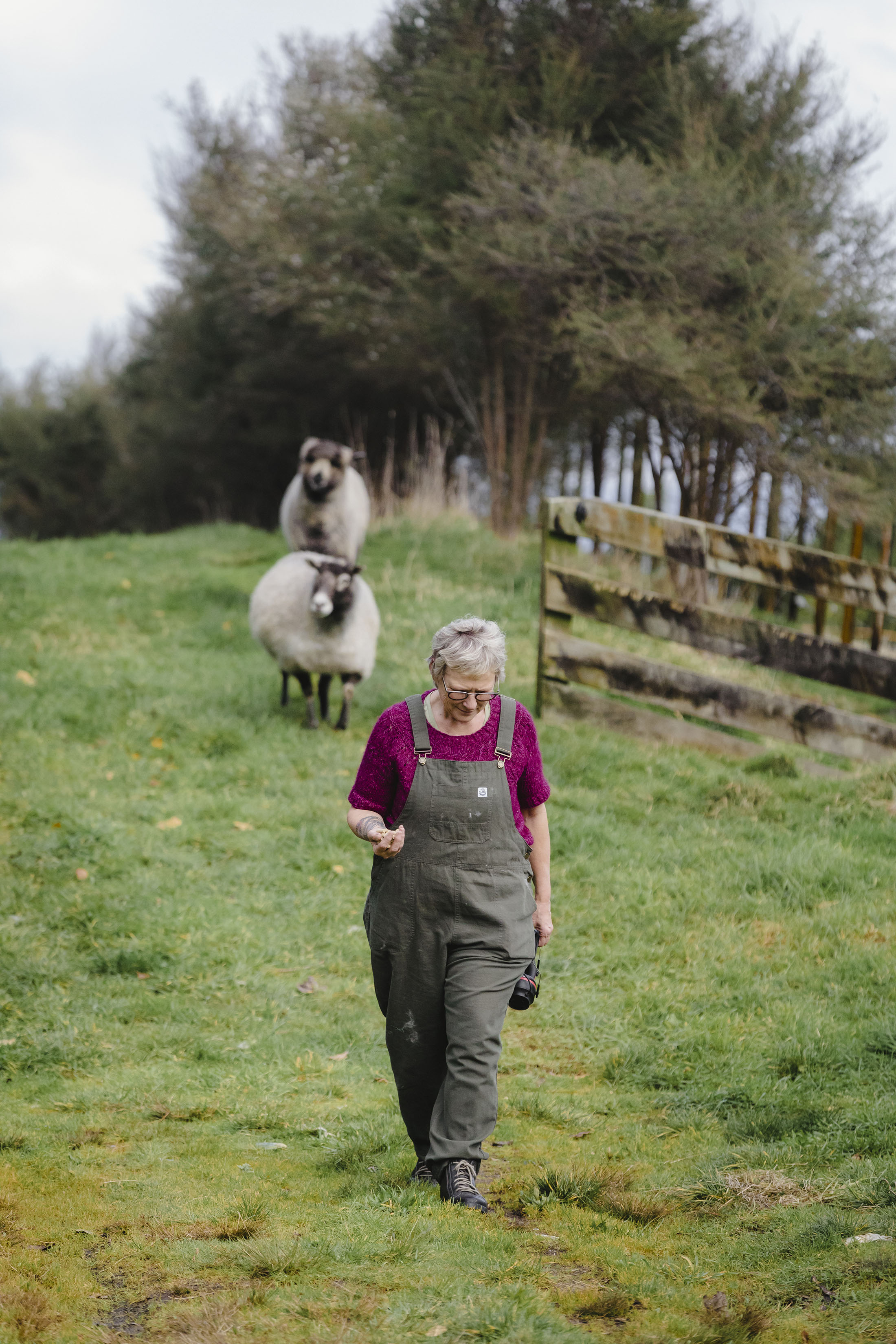
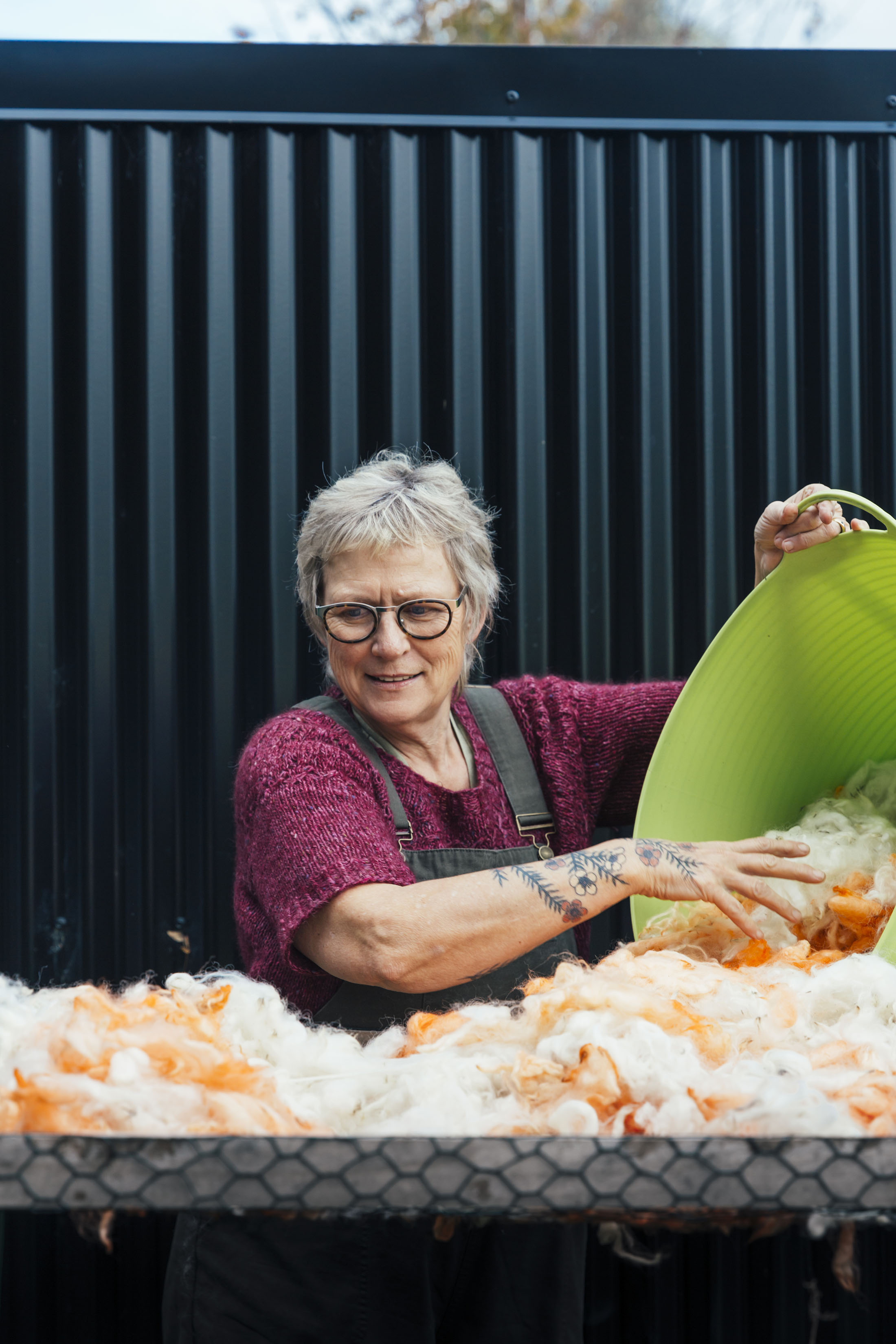
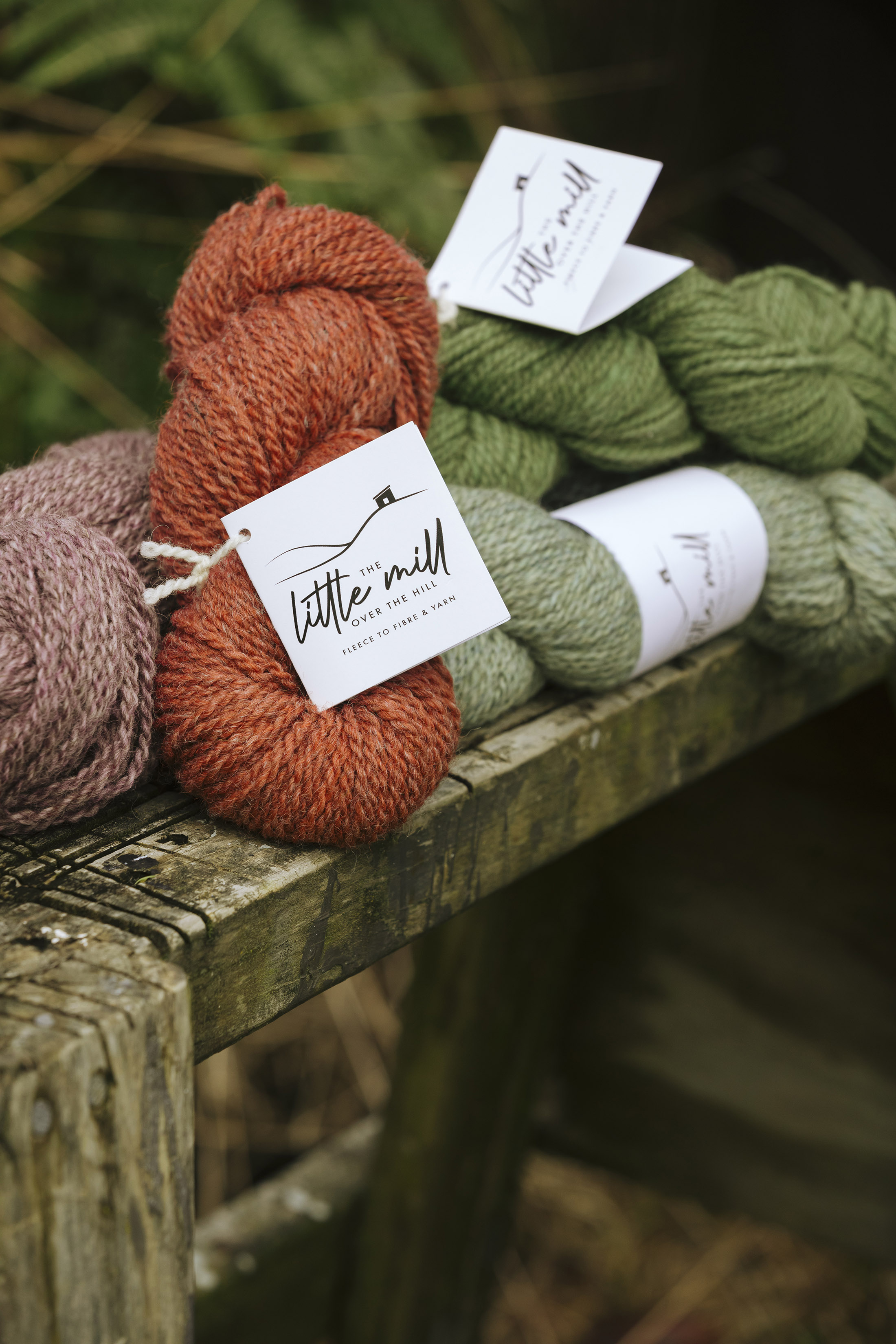
“This was just on a much bigger scale.”
Still a practising midwife at the time, Dinie was already winding down to stop at the end of the year.
She bought the mill, but it took nine months to fix up their shed and find someone to transport the machinery to their home.
In the meantime, she started a podcast through YouTube called My Imperfect Knitting Life, where she also documented her mill journey.
When the mill finally arrived, she didn’t know how to work it properly and there was little in the way of local help with this “lost industry”.
“Every single machine had a problem and it was trying to work out if it was because I didn’t know what I was doing, or if there was a problem.”
Everything has been self-taught, she says eagerly, and jokes,
“I don’t know what I would do without YouTube”.
She’s learned basic mechanics and how to maintain machines on top of every other aspect of turning fleece into fibre or yarn.
“Initially, I was just so happy to make yarn. Looking back, I think ‘Oh my gosh, that was very rough’,” she laughs.
She had dreams of taking all the local fleece and turning it into coloured yarn but quickly learned about the different types and qualities.
“I had to really play and experiment. That’s when you really realise that being creative isn’t something you are necessarily born with, you can practise and learn it.”
She’s found people with “lovely” small flocks of sheep and creates blends with alpaca and bunny fur. She plays around with dyeing the fleeces different colours and blending them, giving them a unique, heathered look.
“I had to really play and experiment. That’s when you really realise that being creative isn’t something you are necessarily born with, you can practise and learn it.”
“I’m still experimenting all the time… and ending up with pretty yarn people can craft with.”
Dinie starts her mornings with a cup of coffee before deciding what to dive into, it depends on the weather and what was completed the day before.
Sunny days are great for washing, dyeing and drying fleece.
It usually takes a day for 5 to 7kg of fleece to be washed twice with the rainwater collected from the roof, rinsed three times and put out to dry.
Wet days are best for working the machines, which need a bit of humidity.
She’ll put the fleece through the different parts of the machine, also taking an entire day, before ending up with the yarn. “It’s a lot of work.”
It’s taken her months to get to this point, with her process still being finessed.
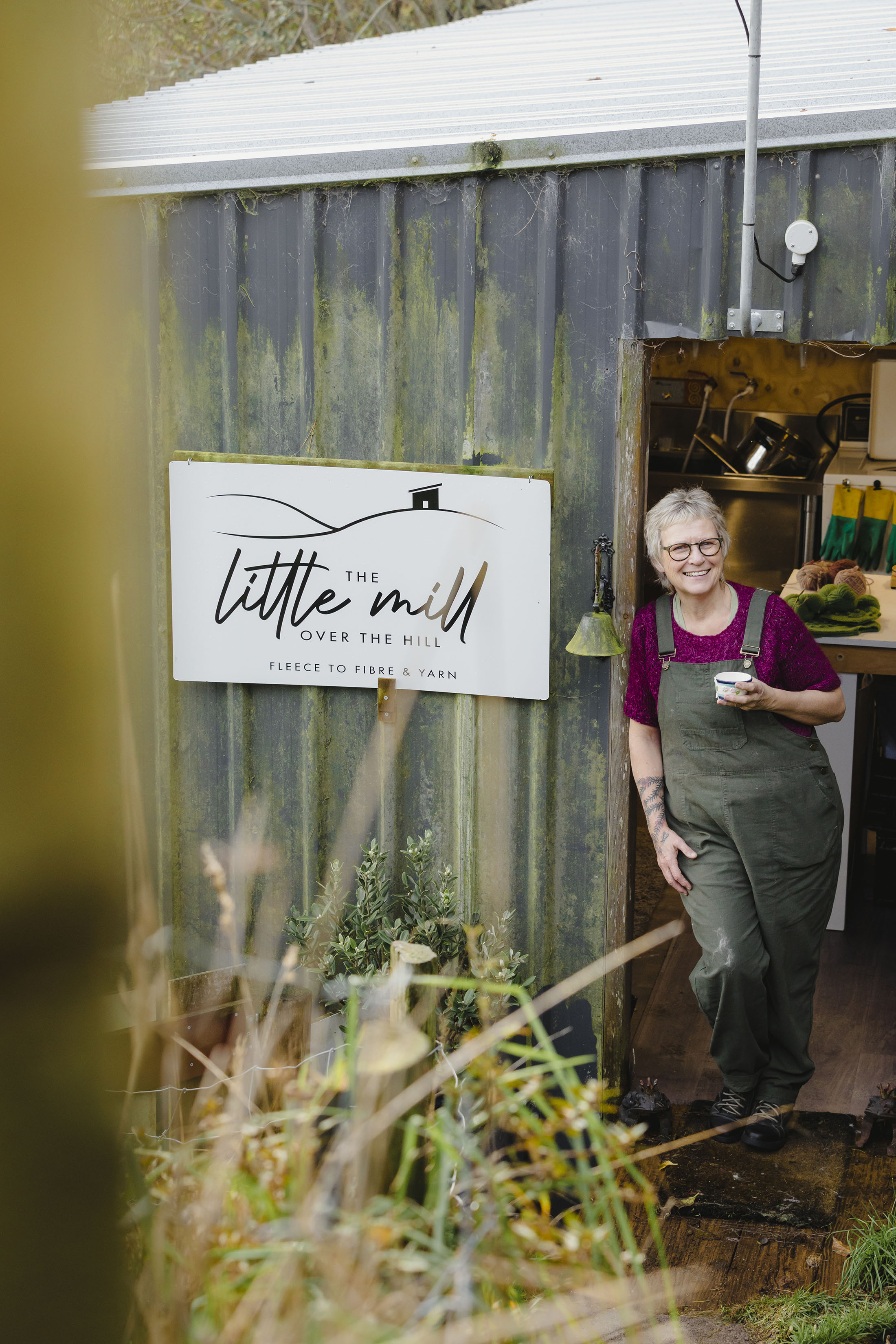
“I’m sort of retired but not… I don’t think I will retire,” she laughs, adding that there are no overheads with it being on their property and she can work when she wants to.
“I get the best of both worlds. I feel really lucky, but I’ve also put in the work to get those options.”
Dinie says she’s met with a lot of support on her channel.
People often call her “brave”, but Dinie says sometimes it just takes giving it a go.
“That’s probably my personality. Not brave, but willing to give it a go.”
Anyone can learn to be creative, she says.
“We choose not to do it, and maybe we don’t have the confidence…
“But I’ve always been that type of person that will give it a go and put myself out there.”
littlemilloverthehill.com
Words by Cira Olivier
Photography by Adrienne Pitts


